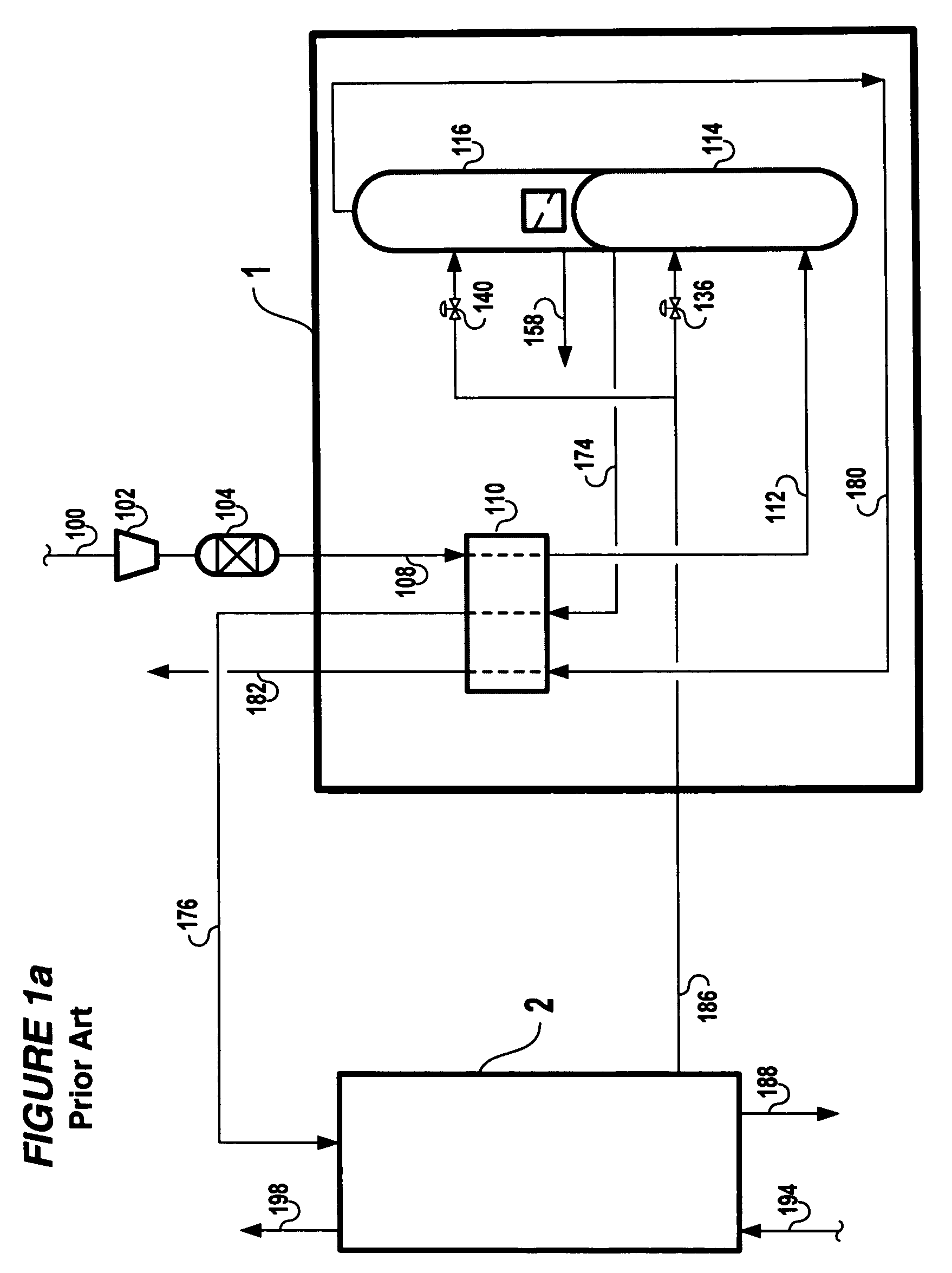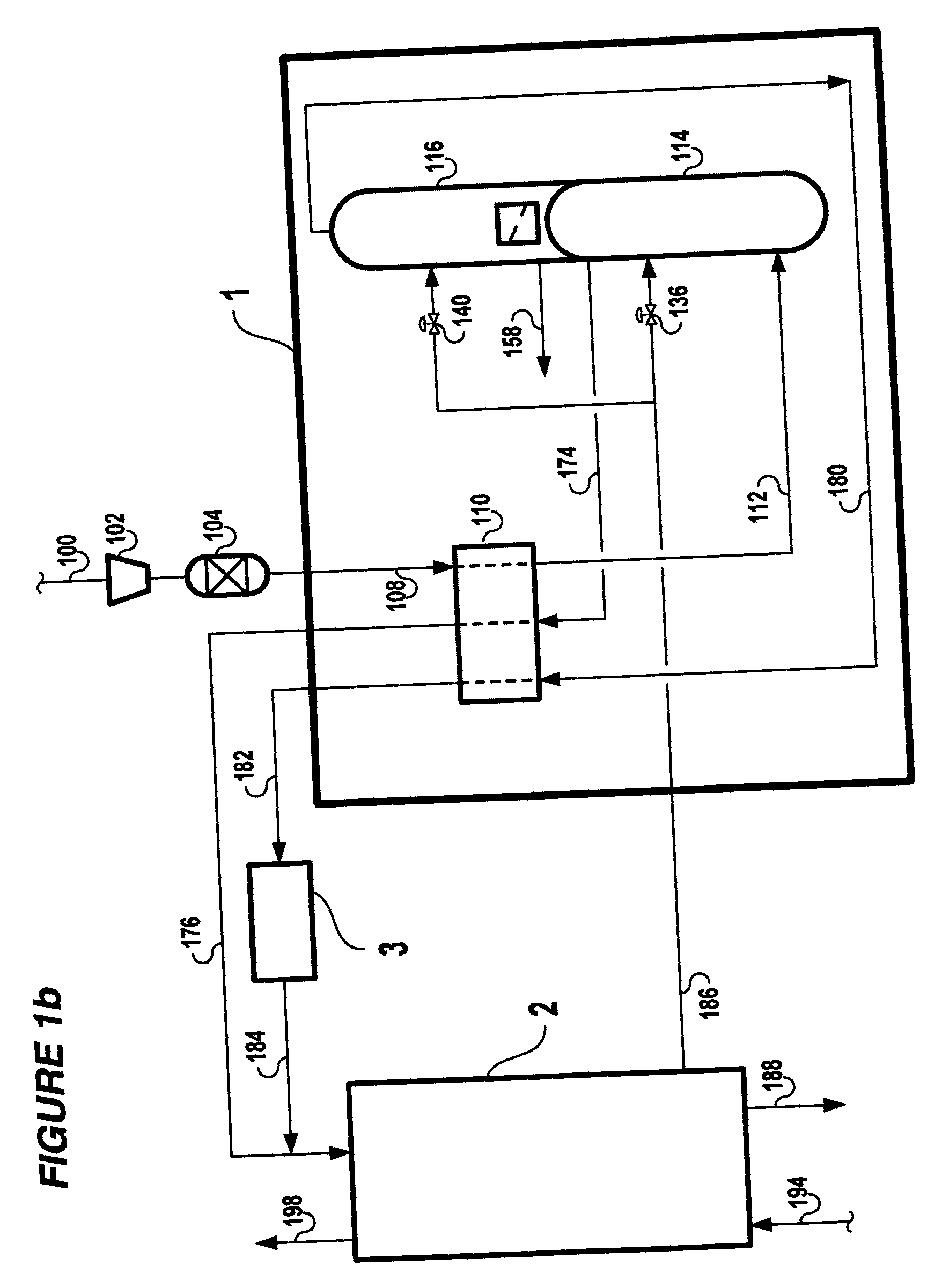System to increase capacity of LNG-based liquefier in air separation process
a technology of air separation and liquefier, which is applied in the direction of lighting and heating equipment, container discharging methods, solidification, etc., can solve the problems of product transportation cost penalty, increased capital cost not beginning to pay off, and sensitive capital costs, etc., to achieve the effect of increasing the capacity of lng-based liquefiers
- Summary
- Abstract
- Description
- Claims
- Application Information
AI Technical Summary
Benefits of technology
Problems solved by technology
Method used
Image
Examples
example
[0049] A worked example has been prepared to demonstrate possible operating conditions associated with the present invention and clarify what is different and common between operating modes. Three cases will be given: Case 1 corresponds to low production mode operation without the supplemental processing unit (3) while Cases 2 and 3 correspond to high production mode operation with the supplemental processing unit (3) in place. For this example, Case 1 is depicted by the LNG-based liquefier (2) of FIG. 3a; Cases 2 and 3 are depicted by the LNG-based liquefier (2) and the supplemental processing unit (3) of FIG. 3b. For Cases 2 and 3, referring to FIG. 3b, valve 380 is closed and valve 382 is open. The cryogenic ASU in shown in greater detail in FIG. 4 and described below.
[0050] Referring to FIG. 4, atmospheric air 100 is compressed in the main air compressor 102, purified in adsorbent bed 104 to remove impurities such as carbon dioxide and water, then divided into two fractions: st...
PUM
 Login to View More
Login to View More Abstract
Description
Claims
Application Information
 Login to View More
Login to View More - R&D
- Intellectual Property
- Life Sciences
- Materials
- Tech Scout
- Unparalleled Data Quality
- Higher Quality Content
- 60% Fewer Hallucinations
Browse by: Latest US Patents, China's latest patents, Technical Efficacy Thesaurus, Application Domain, Technology Topic, Popular Technical Reports.
© 2025 PatSnap. All rights reserved.Legal|Privacy policy|Modern Slavery Act Transparency Statement|Sitemap|About US| Contact US: help@patsnap.com



